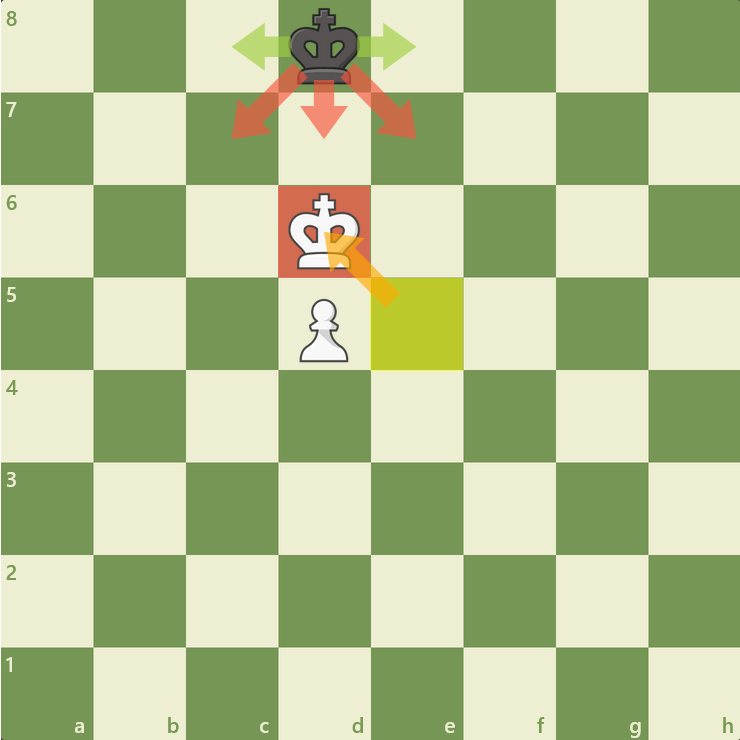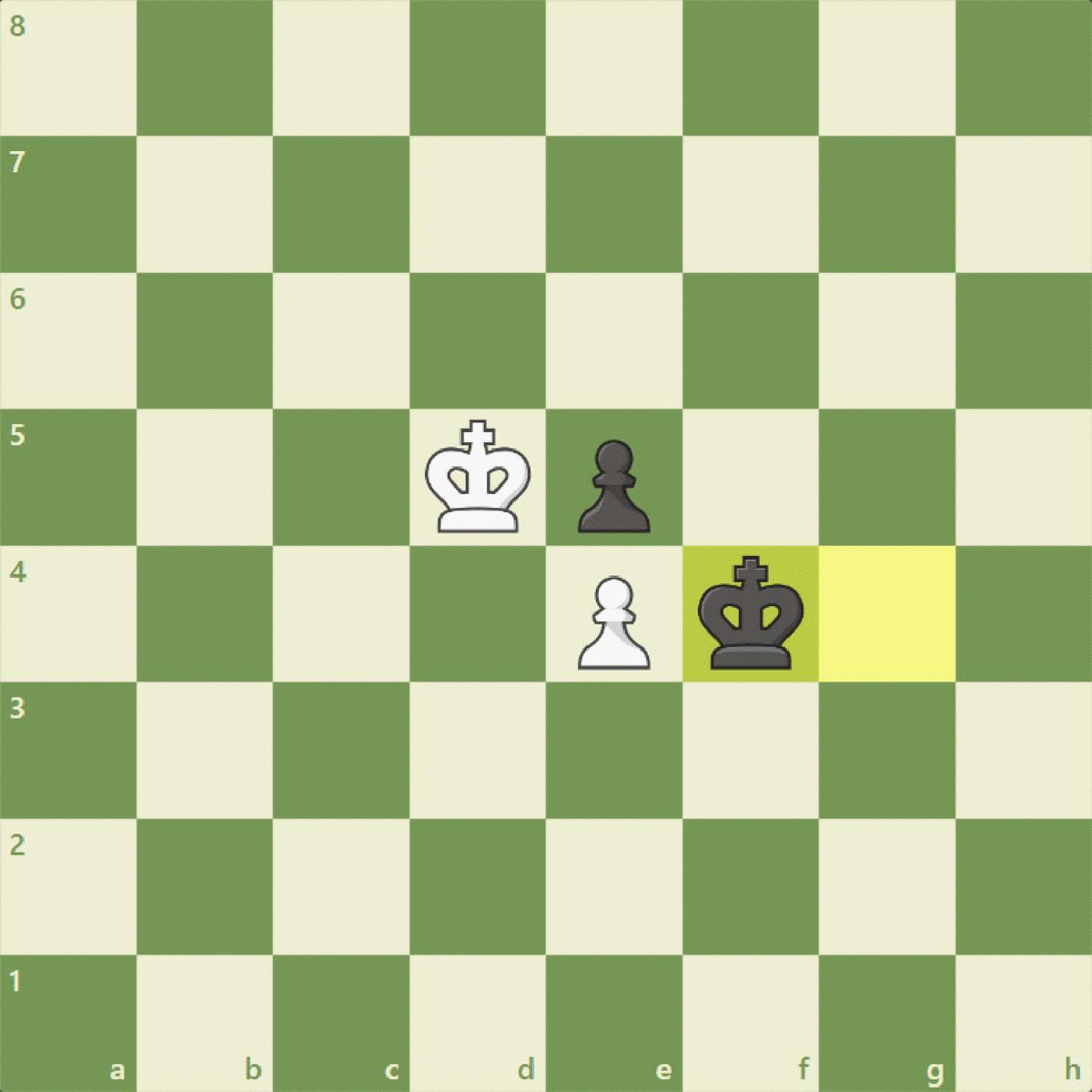
Zugzwang
Moving your pieces is a natural part of chess and a vital one if you want to win. But sometimes it would be nice if you could skip your turn, right? That's the idea behind the zugzwang, and this is what you need to know about it:
- What Is Zugzwang?
- Why Is Zugzwang So Powerful?
- Zugzwang In The Endgame
- Examples Of Zugzwang Throughout Chess History
- Test Your Skills
- Conclusion
- Watch The Video Lesson
What Is Zugzwang?
Zugzwang is a German term that means "a compulsion to move." The idea behind this term is that in certain positions, it would be beneficial for a player to skip their turn because moving any piece would result in an advantage for their opponent.
To make this concept clearer, let's examine one of the most simple and common cases of zugzwang, and how a player can take advantage of it to win the game. In the position below, it's White's turn to move:

White wants to promote the pawn. If Black can stop the white pawn from reaching d8, the game would end in a draw. However, White can move their king to d6 and win the game because Black will be in zugzwang—they have to move and give up control of the d8-square.

If Black could simply not move, they could keep their king parked on d8 forever and White would never be able to deliver checkmate, forcing a draw. However, zugzwang comes to the rescue White can win the game.
Although zugzwang is much more common in the endgame, it's not exclusive to that stage of the game. You can see an example of a player taking advantage of this concept during the middlegame in the next example.
This position occurred in a game between GM Mikhail Botvinnik and GM David Bronstein during the world championship match of 1951. Botvinnik, playing as White, found a way to impose a zugzwang on Bronstein with move 57.Bg5! Any move played by Bronstein would result in severe loss of material and lead to a losing endgame.
Why Is Zugzwang So Powerful?
Usually, in chess, players want to move their pieces and gain a "time" advantage (win a tempo) over their opponents. Sometimes, however, having to move can get you in a lot of trouble—zugzwang!
A zugzwang, by definition, leads a player to a worse position than the one they are currently in. In these positions, if the player makes any move, they usually will lose material. At the elite levels of chess, a small advantage can virtually guarantee a win, so losing a piece with no justification can be devastating.
Examine this case of zugzwang played by Jose Raul Capablanca against Leopoldo Carranza. In this game, Capablanca found a way to force a skewer and win a rook.
Examples Of Zugzwang Throughout Chess History
Many examples of zugzwang positions have been reached throughout chess history. Many are beautiful masterpieces by players that show an exceptional understanding of the positional concepts of chess.
One of the most prominent examples of positional zugzwang comes from the mind of Aaron Nimzowitsch, author of the famous chess book My System. Playing as Black against the strong player Friedrich Saemisch, Nimzowitsch managed to constrain all of White's moves and force him into a lost position. Saemisch, having nothing better to do, resigned.
The second official world champion Emanuel Lasker also made use of the concept of zugzwang in his match against Wilhelm Steinitz for the championship title rematch in 1896. In this game, Lasker was playing as Black and found the move 34...Rg8, which forced Steinitz to give up his pawn on f5 and let Lasker penetrate the position.
Zugzwang In The Endgame
Zugzwang is a crucial concept during many endgames. Knowing how to calculate and force your opponent into a zugzwang position can be the difference between winning and losing.
Look at the famous endgame example below. This position is known for being a "mutual zugzwang." Whoever has to move first loses. Take a look at what could happen if it were White's turn to move.

Another example of zugzwang defining the outcome of an endgame is evident in the position below.
In many endgames, forcing your opponent into a zugzwang position is the only way to win. If you want to improve your game, you must master this concept and learn how to use it well, so you don't throw away your win.
Test Your Skills
Now that you are more familiar with the concept of zugzwang, it is time for you to put your skills to the test! Solve the puzzles below and be on your way to becoming a zugzwang master!
Puzzle 1: Can you force your opponent to move the king out of the way so you can promote your pawn?
Puzzle 2: Should you move directly toward your opponent's pawn or should you try to do something different?
Conclusion
Knowing how to put your opponent against the wall and take advantage of their inability to skip a move in chess is a great way to improve your play. Next time you are playing a game, keep an eye out for your opponent's restricted pieces, and be ready to jump on the opportunity to leave them no good moves!
Want to get better at spotting zugzwang positions? Then try our Premium membership now and start practicing zugzwang puzzles!
Watch the Video Lesson
Reading an article is a wonderful way to get better at chess, but watching a video lesson can help you improve even more! Below you will find a video lesson about the zugzwang.







